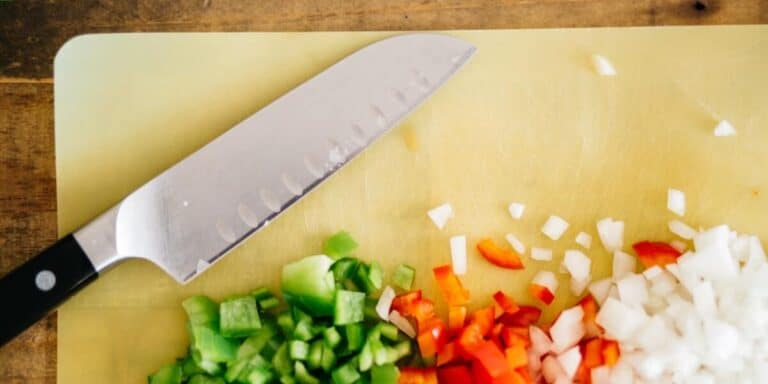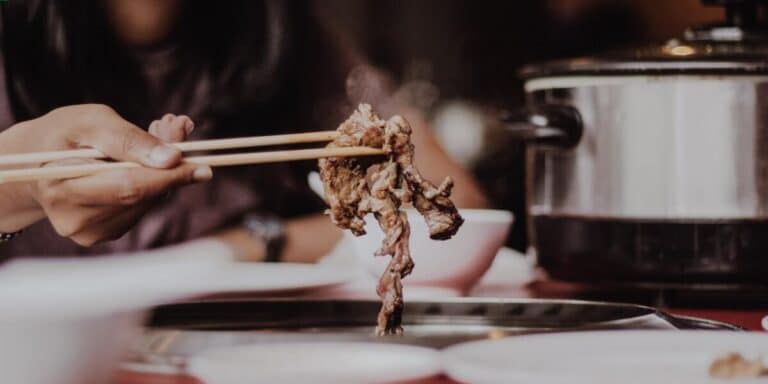Cooking Tri Tip for Beginners
You’re about to master one of the most tender and flavorful cuts of beef: the tri-tip. As a beginner, it’s natural to feel a bit uncertain, but with a few simple steps, you’ll be on your way to a perfectly cooked tri-tip. You’ll start by selecting the right cut and preparing it for the grill. But before you fire up the grill, it’s crucial to understand the benefits of cooking tri-tip and the tools you’ll need to achieve that perfect sear. Let’s get started, and you’ll soon discover why tri-tip is a favorite among grill enthusiasts.
Key Takeaways
• Choose a well-marbled tri-tip cut with a good balance of fat and lean meat for tender and flavorful results.
• Trim excess fat, pat dry with paper towels, and remove silver skin to promote even cooking and browning.
• Use a balanced blend of seasonings and acidic ingredients like vinegar or lemon juice to break down proteins and promote tenderness.
• Grill at medium-high heat (375-400°F) and flip every 4-5 minutes to achieve a nice crust and juicy interior.
• Use a meat thermometer to check internal temperature and cook to 130-135°F for medium-rare, 140-145°F for medium, and 150-155°F for medium-well.
Choosing the Right Cut
When you’re selecting a tri-tip, you’ll typically have two main options: a trimmed cut with most of the fat removed, or an untrimmed cut with a thick layer of fat still attached. The trimmed cut is a good choice if you’re looking for a leaner option with less marbling, which can make it slightly less tender but still packed with flavor. On the other hand, the untrimmed cut has a layer of fat that will help keep the meat moist and add more flavor as it cooks.
You’ll also want to think about the size of the tri-tip, as it can vary from about 2 to 4 pounds. If you’re cooking for a smaller crowd, a smaller cut will do just fine. But if you’re feeding a larger group, you’ll want to opt for a bigger cut to guarantee everyone gets a good-sized serving.
Another factor to think about is the type of tri-tip you’re buying. Some common varieties include grass-fed, grain-fed, and Wagyu. Grass-fed tri-tip tends to be leaner and slightly less tender, while grain-fed is typically more marbled and tender. Wagyu tri-tip is known for its exceptional marbling and rich flavor, but it’s also usually the most expensive option. Ultimately, the type of tri-tip you choose will depend on your personal preferences and budget.
No matter which type of tri-tip you choose, make sure to select one that’s well-marbled and has a good balance of fat and lean meat. This will help guarantee that your tri-tip is tender, juicy, and full of flavor.
What Is Tri Tip Meat
As you learn about cooking tri tip, you’ll want to understand what makes this cut of meat special. You’re probably curious about where tri tip comes from, its key characteristics, and how it’s commonly used in cooking. Let’s break down the basics of tri tip meat, so you can confidently work with this versatile cut in your own kitchen.
Meat Cut Origins
Tri-tip meat comes from the bottom sirloin subprimals of a steer, specifically from the triangular-shaped muscle that’s situated near the hip. You might be wonder how this cut of beef became popular. The fact is, butchers historically considered this area of lean meat to be less valueable. Consequently, larger grocery stores rarely stocked due to low customer demand caused by the meat’s meager marbling. Smaller butcher shops would try to promote tri-tip whenever possible, with little sucess.
-
Tri -tip meat gives you the freedom to treat yourself to steaku s whenever or wherever you are in.
-
The relatively low price means that every day can become a new excuse to show your firiends your grillmastery skills
-
Even when on a budget Tri–tip is THE opportunity, to make everyone enjoy. If even you can make more of less money or less resources in comparison something else.
-
Grill Tri-tip when camping during a trip or visit and have your kid s remem ber y ou as "that good cook".
Tri Tip Characteristics
You’ve learned where tri-tip meat comes from, so now it’s time to explore what makes this cut of beef unique and appealing to many meat enthusiasts. When you look at a tri-tip cut, you’ll notice it’s a triangular piece of meat, typically weighing between 1.5 to 2.5 pounds. It’s a lean cut, which means it’s relatively low in fat, making it a great choice for those looking for a slightly healthier beef option.
As you handle the meat, you’ll notice it has a coarse texture, similar to a steak. The grain of the meat runs in one direction, making it easier to slice it thinly against the grain for maximum tenderness. The tri-tip is also a relatively thin cut, which allows for quick cooking and even heat distribution. These characteristics combined make the tri-tip a great choice for grilling, pan-frying, or oven roasting. Overall, the tri-tip’s unique combination of lean meat, coarse texture, and triangular shape make it a versatile and appealing cut for many cooks.
Popular Uses Explained
Meat enthusiasts often gravitate toward tri-tip for its versatility in a variety of dishes, from classic grilled steak to hearty sandwiches and salads. You can slice it thinly for a juicy sandwich, chop it into bite-sized pieces for a fresh salad, or serve it as a standalone steak with your favorite sides.
Here are some popular uses for tri-tip that’ll make your mouth water:
- Tasty tacos: Slice tri-tip into thin strips and toss with your favorite taco seasoning for a Mexican-inspired feast.
- Hearty steak salads: Chop tri-tip into bite-sized pieces and combine with fresh veggies and a tangy dressing for a satisfying salad.
- Crave-worthy sandwiches: Thinly slice tri-tip and pile onto a bun with your favorite toppings for a rustic, fall-apart sandwich.
- Southwestern skewers: Thread tri-tip cubes onto skewers with colorful peppers and onions, brush with chili powder and lime juice, and grill until tender.
Tri-tip’s adaptability and rich, beefy flavor make it a perfect choice for any meal or occasion.
Benefits of Cooking Tri Tip
When it comes to choosing a cut of beef for dinner, cooking tri tip offers several benefits that’ll make it a staple in your kitchen. You’ll love that it’s relatively affordable compared to other cuts of beef, making it an excellent choice for weeknight meals or special occasions. Additionally, tri tip is a leaner cut of meat, which means it’s lower in fat and calories, making it a healthier option for you and your family.
Another significant advantage of cooking tri tip is its rich flavor profile. The unique shape and structure of the cut allow it to absorb marinades and seasonings beautifully, ensuring every bite is packed with flavor. You can choose from various marinades or create your own to suit your taste preferences. Plus, tri tip is incredibly versatile – you can grill, pan-fry, or oven-roast it, giving you flexibility in cooking methods.
Cooking tri tip also offers a unique texture that’s both tender and juicy. When cooked to perfection, the meat becomes so tender it practically melts in your mouth. Moreover, tri tip is relatively easy to cook, even for beginners. With a few simple techniques and some practice, you’ll be able to achieve a perfectly cooked tri tip every time. Overall, the benefits of cooking tri tip make it an excellent addition to your culinary repertoire. Its affordability, rich flavor, versatility, tender texture, and ease of cooking make it a cut of beef you’ll want to cook again and again.
Essential Tools and Equipment
Now that you know the benefits of cooking tri tip, you’ll want to make sure you have the right tools and equipment to get the job done. To cook a delicious tri tip, you’ll need some necessary grill equipment, as well as tools to prepare the meat and basic cooking utensils. In this section, we’ll cover the essential tools and equipment you need to become a tri tip cooking pro.
Necessary Grill Equipment
To successfully grill a tri tip, you’ll need some essential tools and equipment that’ll help you achieve those perfect, crispy crusts and tender interiors. Let’s plunge into the must-haves for a stress-free and delicious grilling experience.
You can’t just throw your tri tip on any old grill and expect perfection. The right equipment will make all the difference.
- A grill with a lid: This will help you trap heat and achieve those beautiful sear marks. Whether you prefer gas, charcoal, or ceramic, a lid is essential for even cooking.
- A set of grill grates: These will provide a sturdy surface for your tri tip to sear on. You can opt for grates with a non-stick coating for easy food release.
- A grill thermometer: Don’t risk overcooking your tri tip! A thermometer will guarantee you’re grilling at the perfect temperature (medium-high heat, of course).
- Long-handled tongs: These will be your best friend when it’s time to flip and remove your perfectly grilled tri tip. No more burned hands or ruined dinner!
Meat Preparation Tools
Your tri tip‘s journey to perfection begins long before it hits the grill, and a few essential meat preparation tools will make all the difference in achieving tender, flavorful results. You’ll need a good meat trimmer or boning knife to trim any excess fat and remove the silver skin that can make the meat tough. Don’t skip this step – it’ll be worth it in the end.
Next, you’ll want a meat mallet or rolling pin to pound the tri tip to an even thickness. This guarantees that it cooks consistently and prevents the outside from burning before the inside is cooked to your liking. If you’re feeling fancy, grab a meat injector to add some extra flavor to the tri tip. Finally, make sure you have a large cutting board to work on and some paper towels handy to clean up any messes as you go. By investing in these few essential meat preparation tools, you’ll be setting yourself up for a deliciously successful tri tip.
Basic Cooking Utensils
With your tri tip trimmed and prepped, you’ll need some basic cooking utensils to help you handle and cook it to perfection. Don’t worry, you don’t need a whole arsenal of fancy gadgets – just a few essential tools will get the job done.
- Cast Iron or Stainless Steel Tongs: For turning and flipping your tri tip with ease and precision, a good pair of tongs is essential. You’ll be able to grip the meat firmly without piercing it, which is vital for keeping those juices locked in.
- Meat Thermometer: No more guessing if your tri tip is cooked to a safe internal temperature. A meat thermometer takes the uncertainty out of cooking and guarantees your meat is cooked just right.
- Large Cutting Board: You’ll need a clean, stable surface for slicing your tri tip once it’s cooked. A large cutting board is perfect for this job.
- Long-Handled Spatula: A long-handled spatula is great for scraping the bottom of your pan and getting every last bit of those delicious browned bits.
Preparing the Tri Tip Cut
Before cooking, you’ll need to trim any excess fat from the tri-tip cut, if necessary. This step is vital in achieving even cooking and preventing flare-ups on the grill. Take a closer look at your tri-tip cut and check for any thick fat layers or excess connective tissue. If you find any, use a sharp knife to carefully trim them away. Be cautious not to cut too deeply, as you don’t want to remove too much meat.
Next, pat the tri-tip dry with paper towels to remove any excess moisture. This helps create a better crust on the outside and promotes even browning. You can also use this opportunity to remove any silver skin, which is a thin layer of connective tissue that can be tough and chewy. To do this, hold the tri-tip firmly and use the tip of your knife to carefully pry away the silver skin.
After trimming and drying the tri-tip, take a moment to inspect the cut for any irregularities. If the tri-tip is uneven or has any loose flaps, you can use kitchen twine to tie them in place. This guarantees that the meat cooks evenly and prevents any loose parts from burning or becoming undercooked. With these steps complete, your tri-tip cut is now ready for the next stage of preparation.
Seasoning and Marinating Tips
Now that you’ve prepared your tri tip cut, it’s time to add some flavor. You’ll want to choose the best seasonings and marinades to enhance the natural taste of the meat, and we’ll explore some essential spice blends that pair perfectly with tri tip. As we discuss seasoning and marinating tips, we’ll also cover the ideal marinating times and temperatures to guarantee your tri tip turns out tender and delicious.
Best Tri Tip Seasonings
When it comes to seasoning tri tip, you’ll want to strike a balance between enhancing the natural flavor of the meat and adding enough flavor to make it truly memorable. You don’t want to overpower the tri tip, but you do want to complement its rich, beefy taste. So, what are the best seasonings to use?
Some popular seasoning options that’ll make your tri tip truly unforgettable:
- Garlic and herbs: Mix minced garlic with dried or fresh herbs like thyme, rosemary, or oregano for a savory, aromatic flavor.
- Spicy chili powder: Add a kick to your tri tip with a blend of chili powder, cumin, and smoked paprika.
- Lemon pepper: Brighten up your tri tip with a revitalizing mix of lemon zest, black pepper, and a hint of citrus.
- Smoky paprika: Give your tri tip a smoky, BBQ-inspired flavor with a blend of smoked paprika, brown sugar, and a hint of cumin.
Marinating Time and Temperatures
To get the most out of your tri tip seasonings, marinating time and temperature play crucial roles in guaranteeing the flavors penetrate the meat evenly and effectively. When you marinate your tri tip, you’ll want to make sure it’s refrigerated at a temperature of 40°F (4°C) or below. This will prevent bacterial growth and keep your meat safe to eat.
As for marinating time, it really depends on your schedule and personal preference. If you’re short on time, even 30 minutes to an hour of marinating can make a difference in the flavor of your tri tip. However, if you can spare a few hours or even overnight, that’s even better. Just be sure to flip the meat halfway through the marinating time to guarantee even distribution of the seasonings. You can also massage the marinade into the meat to help the flavors penetrate deeper. By controlling the marinating time and temperature, you’ll be able to achieve a more tender and flavorful tri tip that’s sure to impress.
Essential Spice Blends
With your tri tip’s marinating time and temperature under control, you can focus on selecting a spice blend that complements the natural flavor of the meat. Don’t be afraid to get creative and experiment with different combinations to find the perfect flavor for you.
When choosing a spice blend, consider the flavor profile you’re aiming for. Do you want a bold, savory taste or a sweeter, more delicate flavor? Here are some essential spice blends to get you started:
- Garlic and Herb: Mix minced garlic with dried herbs like thyme, rosemary, and oregano for a classic, aromatic flavor.
- Spicy Tex-Mex: Combine chili powder, cumin, and smoked paprika for a bold, spicy kick.
- Italian-Style: Blend together oregano, basil, and bay leaves for a herby, slightly sweet flavor.
- Sweet and Smoky: Mix brown sugar, smoked paprika, and chipotle powder for a sweet, smoky flavor with a spicy kick.
Popular Tri Tip Marinades
Your tri tip’s flavor profile will greatly benefit from a well-chosen marinade, and several popular options can elevate this cut of beef to new heights. When choosing a marinade, you’ll want to weigh the flavor profile you’re aiming for and the ingredients you have on hand.
| Marinade | Key Ingredients |
|---|---|
| Classic Soy-Ginger | Soy sauce, ginger, garlic, brown sugar |
| Italian-Style | Olive oil, lemon juice, garlic, herbs (such as thyme and rosemary) |
| Spicy Chipotle | Chipotle peppers, adobo sauce, lime juice, cumin |
These marinades can add a depth of flavor to your tri tip that’s hard to achieve with seasoning alone. The acidity in the marinade (from ingredients like soy sauce, lemon juice, or vinegar) helps break down the proteins in the meat, making it more tender and flavorful. When using a marinade, be sure to let the tri tip sit for at least 30 minutes to an hour before cooking to allow the flavors to penetrate the meat. You can also marinate the tri tip for several hours or overnight for even more intense flavor. Experiment with different marinades to find the one that works best for you.
Dry Rubs for Tri Tip
Embracing a dry rub approach allows you to add a rich, savory flavor to the tri tip without the need for lengthy marinating times. You’ll love how easily the dry rub blends into the meat’s natural flavors, creating a truly mouth-watering experience. With a dry rub, you can skip the hassle of marinades and get straight to cooking.
When it comes to choosing the perfect dry rub for your tri tip, you’ve got plenty of options. You can go classic with a blend of paprika, garlic powder, salt, and pepper, or get adventurous with a spicy mix of chili powder, cumin, and smoked paprika. Whatever your taste buds desire, there’s a dry rub out there to match.
Here are a few reasons why you’ll love using dry rubs on your tri tip:
- Deep, rich flavor: A good dry rub can add an unbeatable depth of flavor to your tri tip, with notes of spices, herbs, and even a hint of sweetness.
- Easy to apply: Just sprinkle the dry rub all over the tri tip, massage it in, and you’re good to go – no mess, no fuss.
- Endless variations: With so many dry rub recipes out there, you can experiment to your heart’s content and find your new favorite flavor combination.
- Perfect for grilling: Dry rubs are especially well-suited to grilled meats, as they help create a crispy, caramelized crust on the outside that’s simply irresistible.
Feel free to get creative with your dry rub and experiment with different blends until you find the one that makes your taste buds sing.
Setting Up the Grill
Now that you’ve got your tri tip seasoned with a delicious dry rub, it’s time to fire up the grill and get ready for the main event. Before you throw that tri tip on the grill, make sure you’ve got everything set up for success. First, preheat your grill to medium-high heat (about 375-400°F). While that’s heating up, you can get your grates ready. You want to make sure they’re clean and brush them with some oil to prevent sticking.
| Grill Type | Preheat Temperature | Grate Preparation |
|---|---|---|
| Gas Grill | 375-400°F | Brush with oil |
| Charcoal Grill | 375-400°F | Brush with oil and make sure coals are spread evenly |
| Ceramic Grill | 400-425°F | Brush with oil and make sure grill is at a consistent temperature |
As you can see, the key is to get your grill nice and hot, and make sure those grates are ready for your tri tip. You don’t want it sticking and tearing when you try to flip it. Take a few minutes to get everything set up right, and you’ll be rewarded with a deliciously grilled tri tip. Don’t skip this step! A little prep work now will make all the difference in the end. Take your time, and you’ll be enjoying that perfectly grilled tri tip in no time.
Grilling the Tri Tip
Now that you’ve set up your grill, it’s time to throw on the tri tip. You’ll want to verify you’re grilling at the ideal temperature to achieve that perfect sear, so let’s talk about what temperature you should be aiming for. As you grill, you’ll also need to master the art of flipping the tri tip to guarantee uniform cooking – and we’ll break down the best techniques for you.
Optimal Grill Temperature
When grilling a tri tip, you’ll want to preheat your grill to a medium-high heat, targeting an ideal temperature range of 375°F to 400°F. This temperature range will allow for a nice crust to form on the outside while keeping the inside juicy and tender.
Reaching the ideal temperature is vital, as it will make a huge difference in the overall quality of your tri tip. If the grill is too hot, the outside will burn before the inside is fully cooked, and if it’s too cold, the tri tip will take too long to cook and may become dry.
Here’s what you can expect when you hit the ideal temperature range:
- You’ll get a nice sear on the outside, which will add flavor and texture to your tri tip.
- The inside will stay juicy and tender, making each bite a delight.
- You’ll achieve a perfect balance of crunch and chew.
- Your tri tip will be cooked to perfection, making you the envy of your friends and family.
Flipping Techniques Explained
With your grill preheated to the ideal temperature range, you’re ready to throw on your tri tip and master the art of flipping it to achieve perfect doneness. You’ll want to flip your tri tip every 4-5 minutes to guarantee even cooking. For the first flip, use a pair of tongs or a spatula to carefully turn the tri tip over. You’ll know it’s time to flip when you see a nice sear forming on the bottom.
As you continue to flip, you’ll want to rotate the tri tip 90 degrees to achieve those perfect grill marks. Don’t press down on the meat With your spatula, as this can squeeze out juices and make the tri tip tough. Instead, let it cook undisturbed for a minute or two before flipping again. You’ll repeat this process until your tri tip reaches your desired level of doneness. Use a meat thermometer to check for internal temperature, and remember to let the tri tip rest for a few minutes before slicing. With practice, you’ll become a pro at flipping your tri tip and achieving that perfect, juicy texture. Happy grilling!
Cooking Times and Temperatures
To achieve perfect doneness, you’ll need to cook your tri tip to an internal temperature of at least 135°F for medium rare, 145°F for medium, and 155°F for medium well or well done. The cooking time will vary depending on the size and thickness of your tri tip, as well as the heat of your grill or oven.
Here are some general guidelines for cooking times:
- A small tri tip (1-2 pounds) will take about 15-20 minutes to cook to medium rare, while a larger one (2-3 pounds) will take about 25-30 minutes.
- If you’re cooking in the oven, preheat to 400°F and cook for 10-15 minutes per pound, or until the internal temperature reaches your desired level of doneness.
But don’t just focus on the numbers – think about the experience you want to create:
Imagine the smell of sizzling meat wafting through the air, making everyone’s stomach growl with anticipation.
Picture the perfectly charred crust giving way to a juicy, pink interior.
- Think about the satisfaction of slicing into a tender, flavorful tri tip that’s sure to impress your friends and family.
- Envision the memories you’ll make around the dinner table, savoring each bite and enjoying each other’s company.
Checking for Doneness
Once you’ve got a good idea of the cooking times and temperatures, you’ll need to start checking your tri tip for doneness to guarantee it reaches your desired level of tenderness and flavor. To do this, you can use a meat thermometer to check the internal temperature of the tri tip. For medium-rare, the internal temperature should be at least 130°F (54°C), while medium should be at least 140°F (60°C). If you prefer your tri tip more well done, you’ll want to aim for an internal temperature of at least 150°F (66°C).
When checking the temperature, make sure to insert the thermometer into the thickest part of the tri tip, avoiding any fat or bone. You can also use the touch test to check for doneness. Press the tri tip gently with your finger; if it feels soft and squishy, it’s rare. If it feels firm, it’s well done. If it’s somewhere in between, it’s likely medium-rare or medium.
Keep in mind that the tri tip will continue to cook a bit after you remove it from the heat source, so it’s better to err on the side of undercooking than overcooking. Use these methods to check for doneness, and you’ll be able to enjoy a perfectly cooked tri tip that suits your taste preferences.
Resting the Tri Tip
Let the tri tip rest for 5-10 minutes after you’ve removed it from the heat source, allowing the juices to redistribute and the meat to relax. This step is vital, as it lets the muscle fibers unwind, making the meat more tender and juicy. You’ve worked hard to get that perfect sear, and now it’s time to let the tri tip take a breather.
During this time, don’t even think about slicing or serving it. You’ll be tempted, but trust us, it’s worth the wait.
- The juices are redistributing, making each bite more flavorful and tender.
- The muscle fibers are relaxing, reducing the risk of a tough or chewy texture.
- The heat is dissipating, allowing the meat to cool down and become more comfortable to handle.
- The flavors are melding together, creating a more complex and satisfying taste experience.
Slicing and Serving Tips
Now that your tri tip has rested and the juices have redistributed, you’re ready to slice it thinly against the grain and serve it to enthusiastic diners. You’ll want to slice the tri tip in the direction of the fibers to guarantee tenderness. Locate the lines or striations on the meat and position your knife perpendicular to them. Slice the tri tip into thin strips, about 1/4 inch thick, using a sharp knife.
As you slice, you’ll notice the meat is more tender in certain areas. The bottom sirloin part of the tri tip is typically more tender than the top sirloin part. Consider slicing the more tender parts into thinner strips and saving the slightly tougher parts for steak sandwiches or salads.
When serving, consider the overall presentation. Arrange the sliced tri tip on a platter or individual plates in an appealing manner. Add some garnishes like fresh herbs, edible flowers, or microgreens to add a pop of color and flavor. You can also serve the tri tip with your favorite sides, such as grilled vegetables, mashed potatoes, or a fresh salad. Don’t forget to drizzle with your favorite sauce or season with a pinch of salt and pepper. Your guests will surely appreciate the extra attention to detail and the tender, flavorful tri tip.
Frequently Asked Questions
Can I Cook Tri Tip in the Oven Instead of on the Grill?
"Imagine a tender, juicy tri tip, slow-cooked to perfection. You can achieve this without a grill! Cooking tri tip in the oven is a great alternative, and with a few simple steps, you’ll be savoring each bite."
How Do I Prevent Tri Tip From Becoming Too Chewy or Tough?
You’ll prevent tri tip from becoming too chewy or tough by not overcooking it, using a marinade to tenderize it, and slicing it against the grain after letting it rest for 10-15 minutes.
Can I Refreeze Tri Tip After It’s Been Thawed for Cooking?
You can refreeze tri tip after it’s been thawed, but you’ll need to cook it first. Refreezing raw meat that’s been thawed isn’t safe, so cook it to the recommended temperature before freezing it again.
What Is the Best Way to Reheat Leftover Tri Tip Without Drying It Out?
Like a phoenix from the ashes, your leftover tri tip can rise again – tender and juicy. You’ll want to reheat it low and slow, using a bit of liquid, like broth or wine, to keep it from drying out.
Can I Use a Slow Cooker or Instant Pot to Cook Tri Tip?
You can definitely use a slow cooker or Instant Pot to cook tri tip. In fact, they’re great options for tenderizing tougher cuts of meat. You’ll end up with a juicy, fall-apart tri tip with minimal effort.






